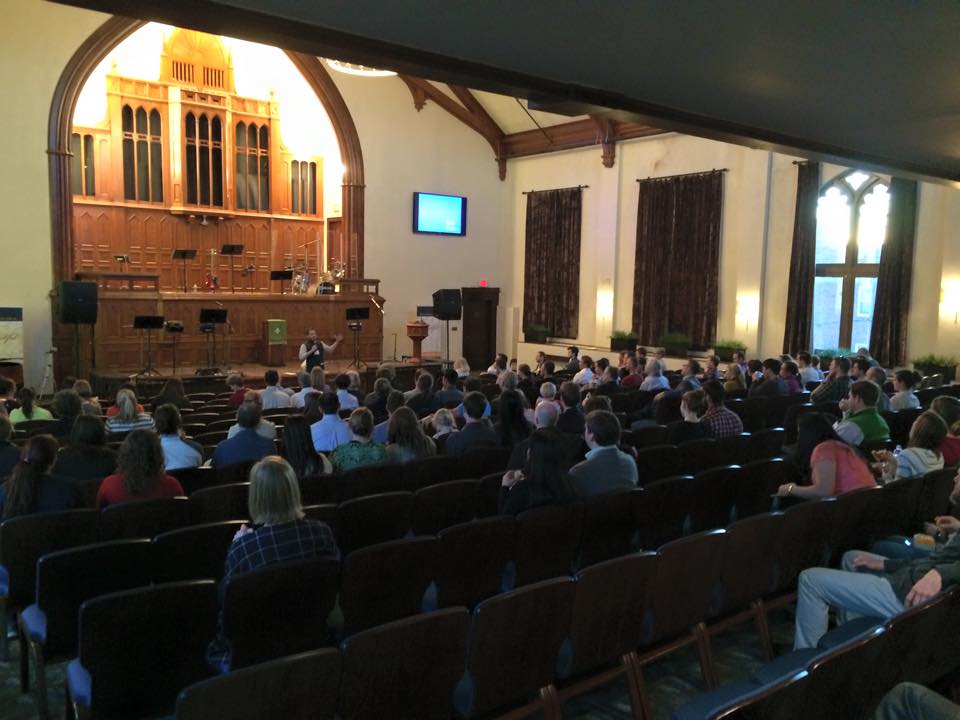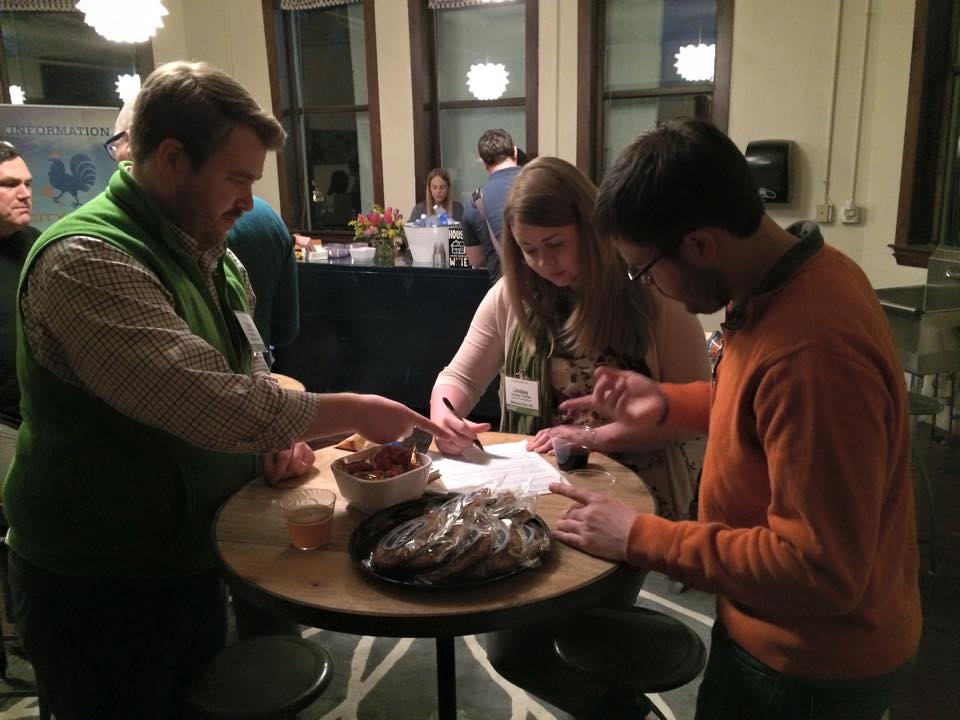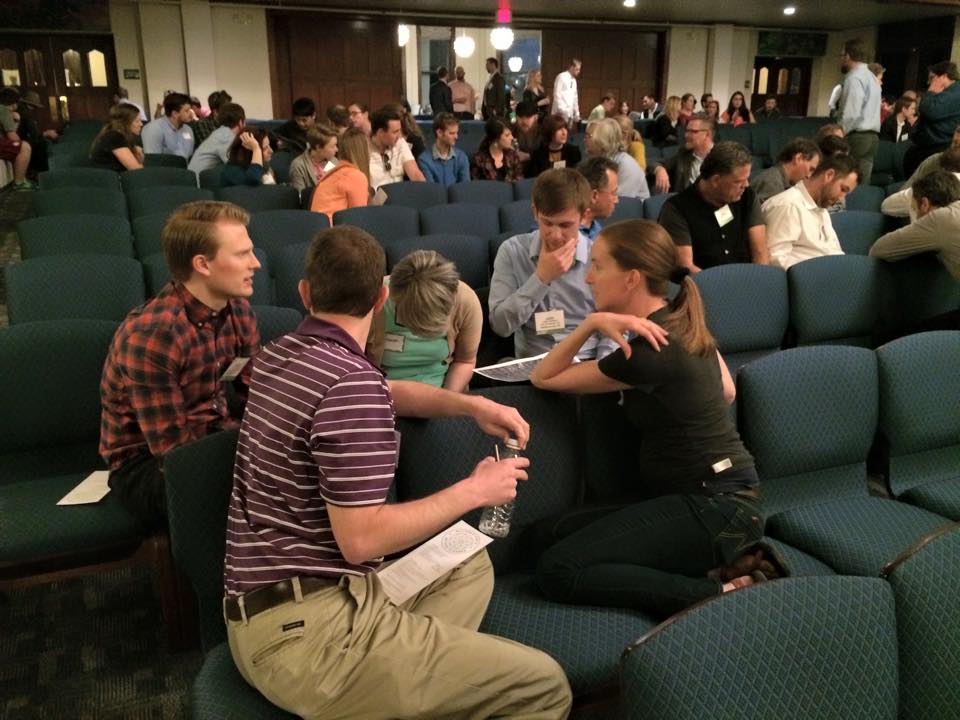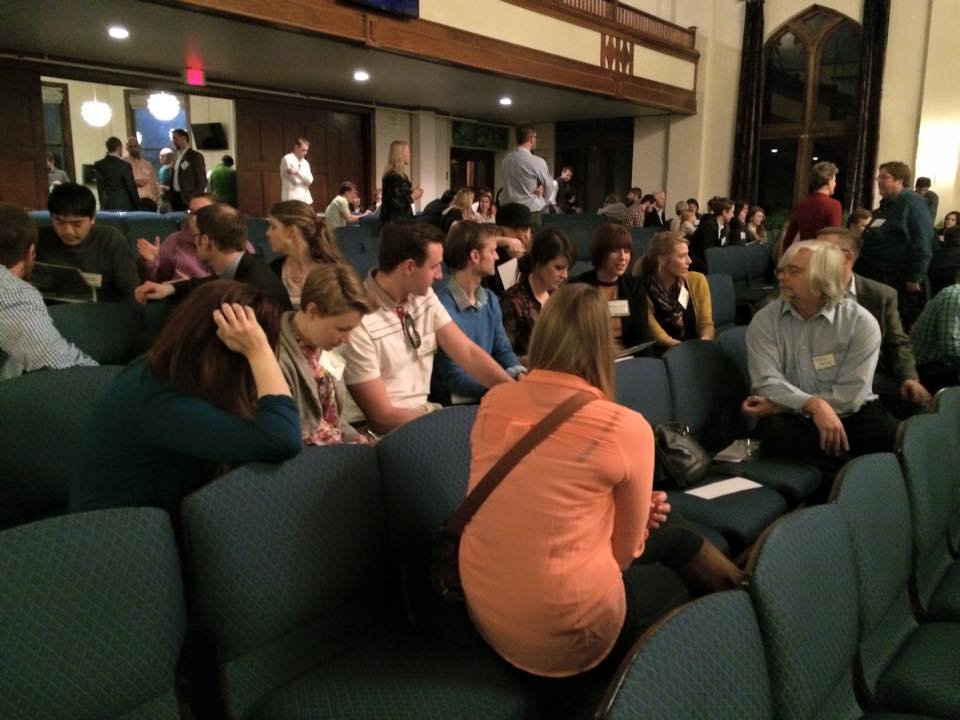On Wednesday, January 28, ULI Oklahoma hosted a public meeting to kick off a project to envision the future of Classen Boulevard in Oklahoma City. Around 200 people attended the event, learning briefly about the project and the history of Classen Boulevard.
A key component of the meeting was a discussion period, when participants broke into groups and talked through a series of topics to identify the challenges and opportunities on Classen Boulevard. Many of the participants were residents and visitors who frequently experience the area around Classen. Concepts from this stakeholder meeting will inform our team’s work as we collaborate with ULI Oklahoma and the City of Oklahoma City to consider possible short-term and long-term improvements for Classen.
Here is a summary of what people shared with us at the meeting. Do you live in this area too? Leave your comments at the bottom of this page.
Destinations: What are (or would be, or should be) important destinations for neighborhood residents? Does Classen affect how people choose to access these destinations?
Accessibility to locations along and near Classen was perhaps the biggest concern to stakeholders at the public meeting. Safe and walkable access to destinations was a common priority. The most popular destinations are the Plaza District, a grocery store, Classen School of Advanced Studies, and parks. One participant discussed how difficult it is to move across Classen and felt that the elementary school crossing at 18th Street is unsafe. Classen is also reported to be a major barrier for cyclists. Along the corridor, participants identify an abundance of underutilized business lots that are envisioned as attractive retail and restaurant locations due to Classen’s traffic counts. Several respondents considered that office space vacancy could be a problem on the corridor.
- “It is hard to move between destinations on the east and west side of Classen.”
- Popular destinations include the Plaza District, residential neighborhoods, parks, and businesses along Classen.
Drive: How does Classen perform for drivers hoping to get somewhere? Consider the different perspectives of neighborhood residents and commuters.
Participants feel that Classen performs well for traffic, but not so well for pedestrians. Classen is such a preferred route for commuters that cyclists from the area reported trying to avoid it when possible. Some participants noted that the street can be confusing in some areas if a driver is not used to how the road curves and changes in configuration, particularly around the 13th Street intersection. Participants have noticed that it is difficult to cross east-to-west across Classen due to the traffic signals prioritizing north-to-south movement. There is a divide between residents and outside commuters over Classen’s intensity of use. Some feel that traffic calming measures, including the widening of the adjacent sidewalks should be taken to slow and discourage traffic while other feel that Classen currently functions as it should.
- “Classen functions well for north-to-south travel, but is difficult to cross east-to-west.”
Bike/Walk/Transit: How does Classen perform for cyclists, pedestrians, or transit riders hoping to get somewhere? What are your ideas to improve Classen for these users?
Participants agree that Classen is not hospitable to cyclists. A major reason pedestrians and cyclists are hesitant to use Classen is a lack of lighting and sidewalk connections (sidewalks come to a sudden end in several instances along Classen). Protected bikes lanes were suggested several times by meeting participants. There is a desire for more frequent safe crossings of Classen, especially at 16th Street. Several other pedestrian and cyclists protection measures were suggested, including the addition of a median, longer stoplights, and greater space between automobile lanes and pedestrian lanes.
- “There is very limited opportunity to cross the street.”
- “The perfect Classen: Protected bike lanes on each side, wider sidewalks, two narrow lanes of traffic in each direction, streetcar down the center.”
Sense of Place: How does Classen perform as a place (a large public space worth visiting) within the community(s) that surround it? Which parts perform particularly poorly or well?
Overall, the participants felt Classen lacks a coherent identity as a place. Participants identified the strongest destination in Asian District between NW 23rd and NW 30th. There were several individual destinations like Café Antigua and other restaurants participants enjoyed visiting, but no coherent identify for the corridor. The Classen School of Advanced Studies was another notable area along Classen with a sense of place. One participant described the look and feel of Classen as a “time capsule.” It was also suggested that the longer stretches of Classen could use some “relief” in the form of businesses or restaurants.
- The Asian District has a better sense of place along Classen.
- There are great businesses on Classen, but traffic moves quickly and sidewalk/bike infrastructure is poor, so there is no incentive for businesses to have an outdoor presence.
Safety: Does Classen feel like a safe place to you? What would need to be improved for you to feel safe? What are the important locations for safety improvements and what would an improvement look like in each of those locations?
There are currently several factors contributing to feelings of danger along Classen including dilapidated storefronts, a lack of proper signage, poor lighting, the low overall amount of traffic lights, and traffic speed. A more consistent and maintained sidewalk could enhance citizens’ feelings of safety along Classen. Residents of the area are interested in implementing traffic calming measures to discourage commuters using Classen as a thoroughfare. One participant raised the issue of Classen’s degree of “permeability” for bikers and pedestrians attempting to cross. It also seems that participants feel that there could be an enhanced police presence and monitoring of Classen.
- Classen can feel unsafe for people in cars, on bikes, or walking. Better lighting, crosswalks, and intersection improvements are needed.
What is the meaning of “A Better Classen” to you?
Many meeting participants categorized “A Better Classen” as a Classen with a more harmonious existence between drivers, pedestrians, and bicyclists. Streetscaping (along with other aesthetic improvements like increased vegetation) and traffic calming were suggested to help encourage this. Participants noted several obstacles (too many vacant offices or parking lots) that prevent Classen from reaching its full potential. Participants felt that Classen could be viewed as more than simply a thoroughfare. For example, one participant described their vision for Classen to become “A Grand Boulevard.”
- “A boulevard with buildings and shops fronting it with sidewalks and parking, providing connections to other districts in the area. More than a corridor for moving vehicles.”
- “A place where we feel safe to walk with our families. A safer, friendly, more interesting place to be.”
- “More livable space included without jeopardizing traffic flow as Classen becomes a more widely-used thoroughfare.”




